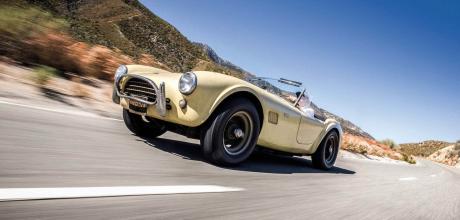1964 Shelby Cobra 289
Ever wondered how special a totally original, unrestored Shelby Cobra would feel? This guy should know: as well as the ‘Dirtbag’, he’s owned 50 of them. Preston Lerner finds out more.
Photography Evan Klein
Dishing the dirt
They don’t call Lynn Park ‘Mr Cobra’ for nothing. About 50 of them have passed through his hands over the past five decades. At the moment, he houses nine within his sprawling garage in suburban Los Angeles, along with several reproductions and enough memorabilia to consecrate a shrine to Carroll Shelby. His collection includes one of the five so-called FIA roadsters that raced internationally in 1964 and one of the four bad-ass drag-racing Dragonsnakes. But the car that aficionados queue up to see is an easily overlooked, bonestock 289 with badly pitted and chipped paint that Park cheerfully calls ‘Dirtbag’.
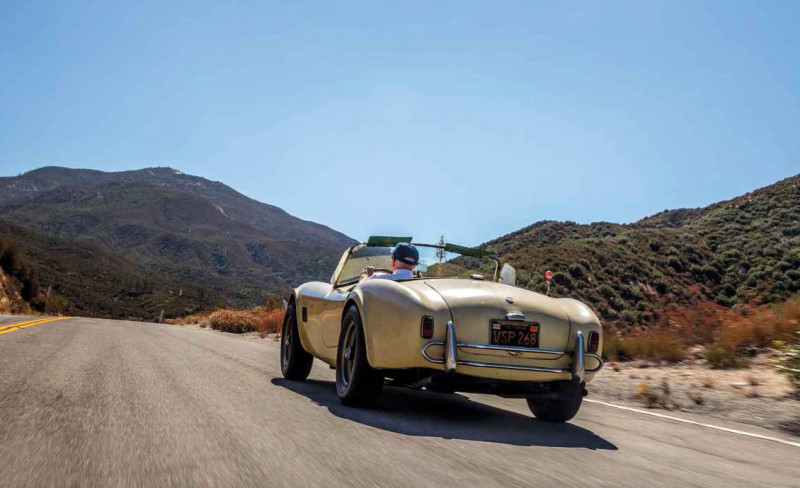
This particular Cobra wasn’t running when Park bought it, and the nose got lightly pranged while the ratty-looking car was being pulled by a tow rope — because the brakes didn’t work — into the Cobra Day exhibit at the Petersen Automotive Museum shortly after he bought it in 1994. ‘Shelby was there, of course,’ Park recalls. ‘He told me, “Lynn, nobody’s looking at the shiny cars. They’re all looking at yours. You’ve got to leave this car alone.’”
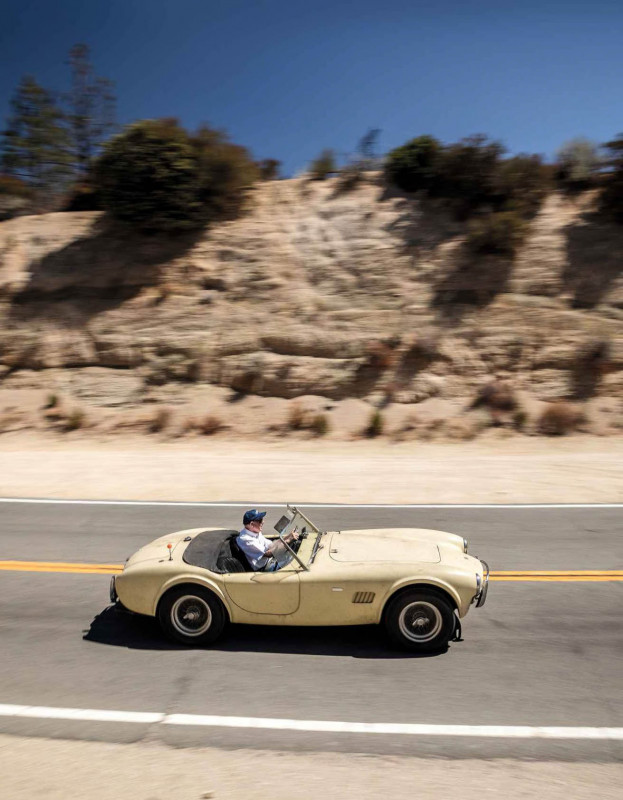
Although this advice sounded strange at the time, it now seems prescient. These days, thanks to the obsession with barn-finds and the popularity of preservation classes, the collector car world is full of machines backdated to make them more ‘original’. But Dirtbag — a 1964 roadster owned for many years by the Offenhauser family of Indy car fame — is a time capsule that authentically showcases what a well-used, plain-jane Cobra looked, felt, drove and sounded like back in the day.
Now 79, Park has been a Southern California car guy virtually from birth. By high school, he was a straight-line drag racer who bought cars at wrecking yards, hot-rodded them with big motors and resold them for a profit. In 1962, his life changed instantly when his sister’s boyfriend showed him a copy of the September issue of Road & Track. On the cover was a yellow Cobra driven by Shelby himself.
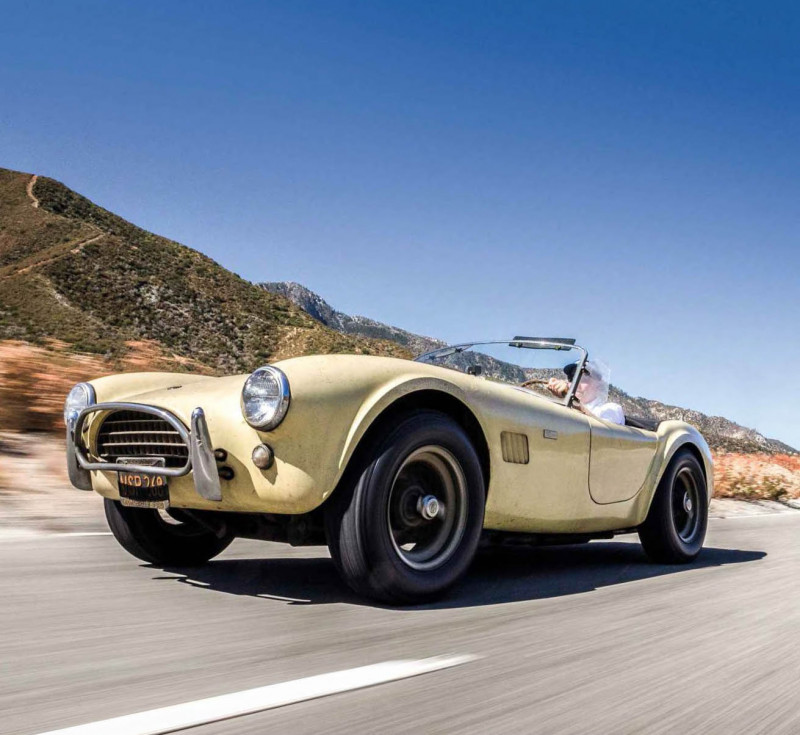
Within a week, Park made a pilgrimage to the shop in Venice where a small cadre of craftsmen was transforming AC Aces into Shelby American Cobras. ‘Shelby was on me because he thought I was a customer,’ Park says with a chuckle. At the time, he was a college student who couldn’t afford anything as exotic as a Cobra. ‘But I hung around there so much that some people thought I worked there!’
Park eventually cured his own case of Cobra envy by stuffing a Ford Hi-Performance 289ci V8 into an AC Aceca. It wasn’t until 1970 that he was able to afford the real McCoy — a wrecked 289 that he picked up for a mere $2100 and restored with celebrated Cobra maven Mike McCluskey over four years. He was able to continue amassing Cobras despite his modest means because, frankly, hardly anybody wanted them back then.
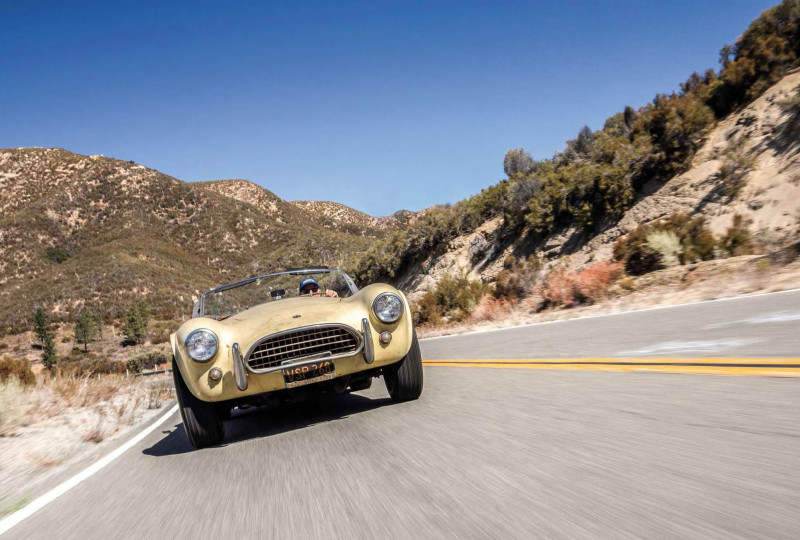
‘Shelby’s advice to leave well enough alone prompted Park to shift his goal from restoring the car to merely rehabilitating it’
The dirty little secret of Shelby America is that Cobras were popular for only a couple of years very early in their history. Big-block 427s, which are now the most highly prized examples of the breed, were virtually unsaleable when production began in 1964, and it wasn’t uncommon for cars to languish at dealerships for more than a year before finally changing hands at bargain prices. The fuel crises of the 1970s made the gas-guzzlers even less appealing. Park remembers buying a 289 Cobra — a running, driving car — at auction for a friend for a measly $3470.
The car Park now calls Dirtbag is chassis CSX2307. (For the record, ‘C’ was AC Cars’ designation for an Ace chassis, ‘S’ referred to Shelby and X’ meant export.) It was built in January 1964 and shipped to the States the following month. It was very much a standard, entry-level Cobra with a 271bhp Hi-Po 289 V8, four-speed Borg-Warner T-10 transmission, rack-and-pinion steering, transverse leaf springs and dainty wire wheels. Just about the only upgrade was a Cobra-branded radio, which added a whopping $45 to the invoice.
The early history of the car is fuzzy. Because it had 33,000 miles on the odometer by the time he’d acquired it, Park surmises that it was a demonstrator. Fred Offenhauser bought the car in 1969. Besides securing a vanity licence plate — ‘OFFIE,’ as ‘OFFY’ was taken — he had the red Cobra repainted in a shade of yellow similar to the colour the original prototype had worn when it debuted at the New York International Automobile Show in April 1962 (and later graced the cover of Road & Track).
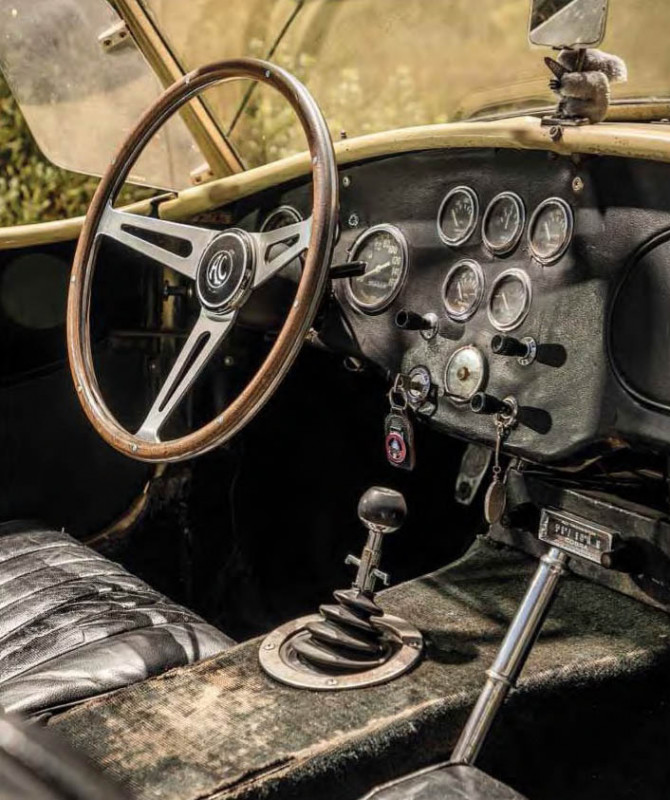
Offenhauser died in 1973, and CSX2307 was parked two years later. Outside. Under a blue tarp. And there it sat — for 20 years, braving the weather of the San Gabriel Valley without being maintained, much less moved or started.
In 1994, the car was bought by Park’s friend Don Lee. But Lee wanted a race car, so he sold CSX2307 to Parkin return for cash and a cache of race-car parts. Park fully intended to restore it. ‘I had bought so many quote/unquote beaters in the past that it was right up my alley/ he says. ‘I like working on the cars, and this was a good, fun project for me to work on.’
Shelby’s advice to leave well enough alone prompted Park to shift his goal from restoring the car to merely rehabilitating it. Fortunately, all he’d done so far was to remove the original wiring loom. So he put it back in and went to work on the mechanicals.
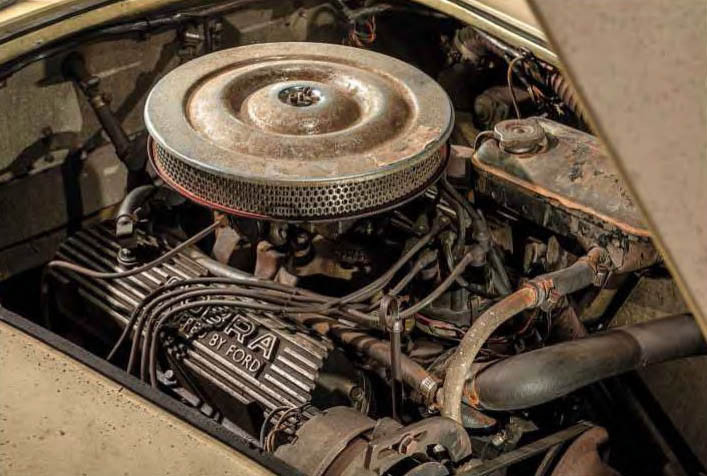
‘I put in a new water pump and a fuel pump and master cylinders,’ he says. ‘I had to go through the fuel system completely, rebuild the carburettor, repack the wheel bearings, rebuild the calipers and flush both the brake and fuel systems. So it was a lot of work. But there was nothing major — no clutch, no transmission, no rear end, no engine.’
The engine turned freely when cranked by hand, so when the new ancillaries were installed, Park fired it up. It sparked to life — and belched a giant cloud of smoke, most likely caused by rings that had seized against the pistons. ‘Somebody suggested that I try Marvel Mystery Oil,’ he says. I put in two quarts at first, and that worked so well that I drained the pan and then re-filled it. I’m sure the engine needs valve guides and seals, but going down the road, it doesn’t smoke.’
The leather bucket seats and carpeting were too far-gone to be saved, so Park installed well- worn, period-correct replacements that he already owned. The pitted chrome is original. So is the tonneau cover, which sports a long, not-quite-symmetrical strip of industrial stitching that was evidently employed to repair a rip. As for the body, he didn’t do a damn’ thing, just left it in all its ‘glory’ — flat, faded yellow paint dotted with innumerable pockmarks and a handful of chips. For a while, Park parked the car under another Cobra, which was stored on a lift. It leaked fluids onto CSX2307, so the hood and rear deck also bear the ghostly remains of untreated oil stains.
It took Park several years to complete the project. When he did, he drove it over to a friend’s shop. ‘He looked at it and said, “What a dirtbag that is,”’ Park recalls, laughing. ‘And I thought, “Oh, beautiful! Every car needs a name, and this is it.’”
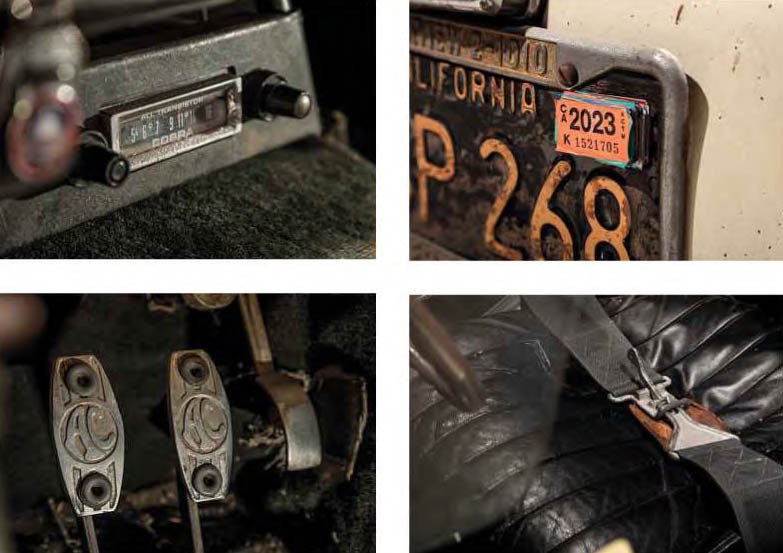
This page and opposite Original Cobra-branded radio was an option, still present in an interior that features replacement carpets and seats not quite as worn as the originals; faded yet still-gorgeous body goes well on the old 289 V8
Just as parents can’t — or won’t — pick a favourite child, Park declines to choose a favourite Cobra. ‘They’re all good for different purposes,’ he insists. Dirtbag isn’t a weapon optimised for the racetrack, nor is it ideal for the long-distance tours he regularly enjoys with his wife — a 289 retrofitted with a five- speed gearbox is much more civilised at highway speeds. But the car is an exemplar of serious motoring circa-1964, and it holds up well even half a century later.
Hie regular 271 horsepower doesn’t sound like much today but it’s plenty of grunt for a car that weighs only 2000lb (900kg), and mid-range torque (312lb ft, peaking at 3400rpm) is impressive. Cornering limits are, well, limited, but the handling is predictable, the lack of ultimate grip makes it all the more entertaining, and the ride is surprisingly plush. There's no air- conditioning, of course, and the cockpit gets toasty from heat radiating through the firewall and up from the aluminium transmission case. But the car is just perfect for jaunts along the twists of Angeles Crest Highway, which begins, conveniently, less than a mile from Park’s house.
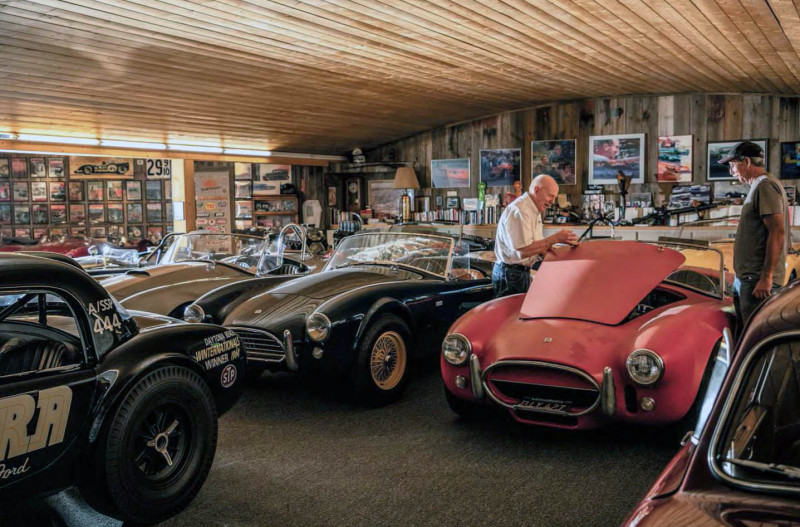
As you might imagine, Dirtbag is a polarising car within the Cobra community. Some collectors consider the car vaguely disreputable, and they think of it as a dirtbag’, rather than the Dirtbag. But most people are charmed by the car’s unpretentiousness, which makes it seem friendlier and more approachable than a 100-point trailer queen. And aside from the body, which has obviously suffered from decades of neglect, CSX2307 is a rare example of a Cobra that’s aged naturally and gracefully without cosmetic surgery or mechanical overhauls.
‘He continued amassing Cobras despite his modest means because, frankly, hardly anybody wanted them back then’
Park, for his part, was so tickled by the way Dirtbag turned out that he was determined to fashion a companion piece. But instead of struggling to find another time capsule — which would have been a prohibitively expensive proposition — he started with a Kirkham Motorsports Cobra, which is generally considered to be the most accurate of the many re-creations on the market.
Park already owned a large inventory of authentic but dilapidated Cobra parts, and he supplemented them with components he found on eBay. To dress up — or maybe that should be dress down — the body, he added a flattening agent to the paint and then went to work with a welding hammer. To create his secret sauce, Park soaked gaskets and old nuts and bolts in a water bottle until rust appeared. When the mixture was appropriately revolting, he sprayed it liberally around the engine bay.
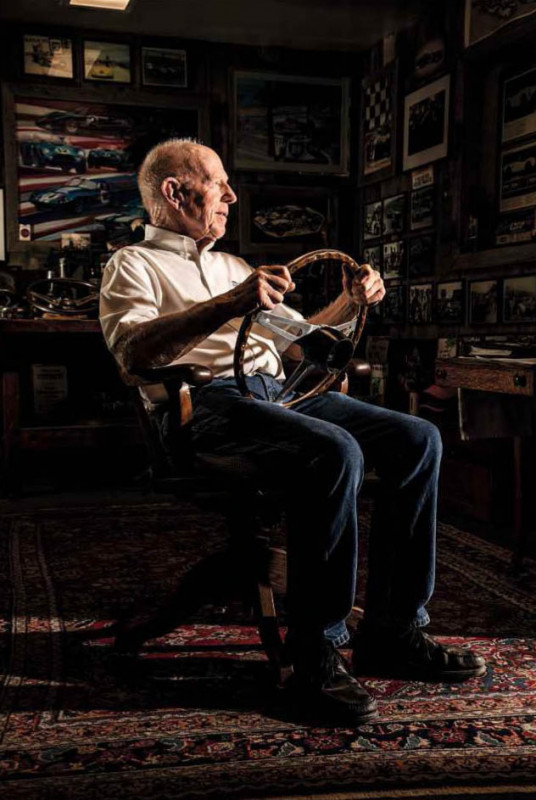
Above, left and right Lynn Park, otherwise known as ‘Mr Cobra'; he's owned 50 in as many years, with nine currently vying for space in his LA garage
The result was a brand-new car that looked like it had been ridden hard and put up wet. Park calls it ‘Son of Dirtbag’. He liked it so much that he later used the same blueprint on a Kirkham 427, which he promptly dubbed ‘Daughter of Dirtbag’. ‘And by George, it really looks old,’ he says.
But Dirtbag, thoriginal, not only looks old; it is old, and it’s as original as can be, which also makes it extremely valuable. You’d have a hard time finding a nice leaf-spring Cobra for less than $lmillion. But you couldn’t buy Dirtbag no matter how much you were willing to pay because Park says he isn’t selling at any price.
‘People come over here all the time to see the car,’ he explains. ‘They’ve never come here to look at my bank book.’
TECHNICAL DATA 1964 Shelby Cobra 289
- Engine 4736cc OHV V8, four-barrel carburettor
- Max Power 271 bhp @ 6000rpm
- Max Torque 312lb ft @ 3400rpm
- Transmission Four-speed Borg-Warner T-10 manual, rear-wheel drive
- Steering Rack and pinion
- Suspension Front and rear: lower wishbones, transverse leaf springs, telescopic dampers
- Brakes All Discs
- Weight 916kg
- Top speed 136mph
- 0-60mph 5.2sec


